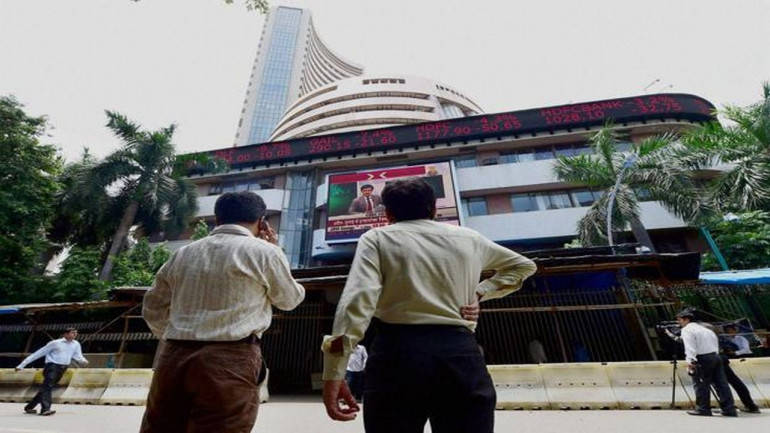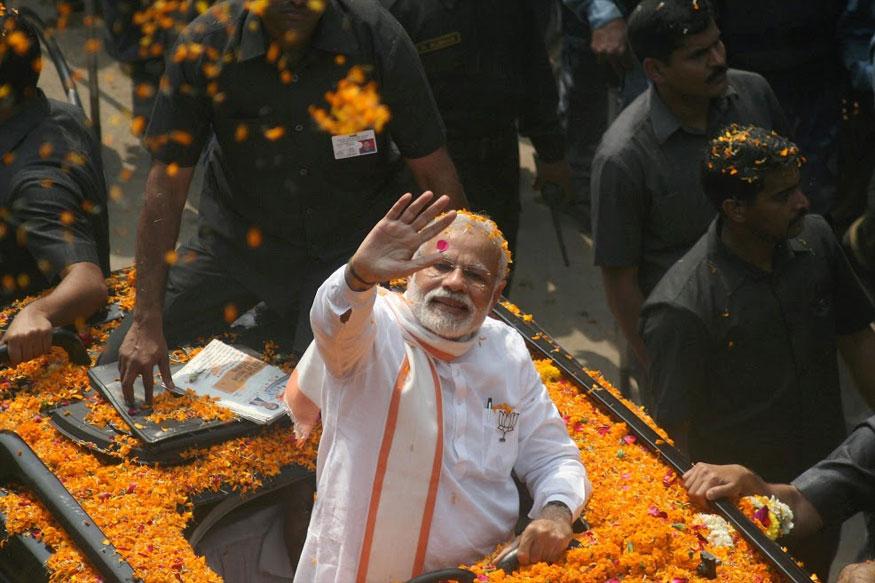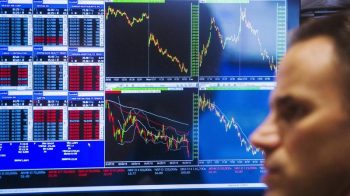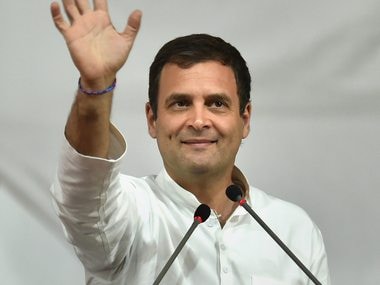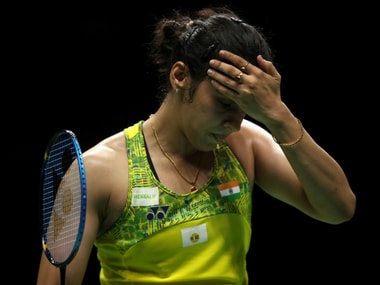For risk averse equity investors, a largecap portfolio concentrated in reasonably priced quality growth will withstand volatility and deliver fine returns.
Sunil Sharma
An event such as the latest India-Pakistan standoff is bound to shake up markets and the global economy. Demonetisation, the SEBI reclassification and IL&FS fiasco are just some of the recent unforeseen events that led to high volatility and dispersion in outcomes in recent history.
Similarly, the notion of making investment decisions on expectations of a particular outcome is similarly challenging. Things rarely evolve as one reasonably expects. It is also human nature to expect a continuation of the recent past, which rarely occurs. The fact is that forecasts aren’t worth very much because nothing is certain.
Rather, we would submit that the job of forecasting is better reduced to the job of identifying shifts in the market narrative and implementing strategies to take advantage of the opportunities best suited for the evolving environment. We list ten of these shifts below:
1. FII Flows into India Are Rising Again (Positive)
FIIs were net buyers to the tune of Rs 16,100 crore in February. In comparison, FIIs sold a net Rs 21,000 crore during April '18 to Feb '19. Over the last four months, FIs have pumped in Rs 28,500 crore. It is too early to state that FIs flows will sustain through the rest of the year; however, the data clearly suggests that FIs have been supporting the markets of late, which is encouraging news for investors.

Source: Bloomberg, Sanctum
Emerging markets received $25.6 billion of foreign fund flows in February, of which $2.9 billion has come to India, signalling that sentiment for the region is possibly turning, and India will garner a fair share of FII inflows.
2. Key Global Headwinds in 2018 Are Shifting to Neutral (Positive)
Key global headwinds in 2018 -- the US China trade wars and Fed Chairman Powell's ill-conceived and aggressive rate hikes and balance sheet contraction -- appear to be dissipating and shifting to neutral.
3. Crude Oil Appears Ready to Move Higher on Peaking US Shale Production (Negative)
With the peaking of rig counts in the US, US shale production could be peaking in the near term. That's offset by slowing global demand, but aggressive supply cuts by OPEC suggest that oil producers want, or need, higher prices. We'd expect the rise, if any, to be gradual. Further increases in crude will yet again begin to act as a drag on Indian markets.
4. India Pakistan Tensions Have Shifted the Election Narrative in Favor of the Incumbent Party (Positive)
The next few weeks leading to the election are likely to be dominated by rhetoric on the escalating tension between India and Pakistan, and this favours the incumbent party. Should the BJP win the election, overseas institutional capital is likely to flow back into India.
5. Economic Data Remains Healthy Enough for the US, While Domestic Data on Credit & Manufacturing Looks Strong (Positive)
Despite worries about a global slowdown, we see no clear indications that the US is heading into a contraction. Housing has slowed, primarily due to rising mortgage rates. Leading indicators have turned lower but still in growth mode, +3.5 percent YoY.
The US Services PMI rose to 56.2 in February 2019 from 54.2 in the previous month, well above expectations of 54.3. The latest reading points to strong services sector performance, and robust business and consumer spending.

Source: Bloomberg, Sanctum
6. A Pro-Growth, Communicative and Aligned RBI (Positive)
In a change from the prior regime, the RBI is clearly aligned with government policy and growth initiatives. We believe the benefits of an aligned policy mandate more than offset the risks, particularly in light of a government that has brought about structurally low inflation and demonstrated fiscal discipline. The RBI will play a key role in ensuring liquidity in the system and working in concert with the government suggests an integrated response, which will probably be more effective in addressing domestic credit concerns.
7. Earnings Growth (adjusted) is Strong, But Valuations Still Remain Expensive (Mild Positive)
While the macro picture suggests robust earnings, identifying attractively valued investments remains a challenge. Stocks are still expensive. Earnings growth has been impressive, particularly in IT, private banks, corporate banks and staples, and earnings will drive the markets, and stocks, higher.
8. Stress Remains in NBFC, Developer and Housing Finance and Low Rated Papers (Negative)
Unlike most credit crisis, this crisis is unique in that large banks and large NBFCs are in relatively healthy shape. The stress is concentrated in the tertiary lenders, unorganised and smaller players. This does not look like a systemic problem and it will need to be managed; for now, the government has ringfenced the situation in the short term via the Rs 46,000 crore PSU bank capital infusion.
9. Valuations Have Come Down to Reasonably Valued (Positive)
The chart below highlights the relative performance of mid caps versus large caps. Mid caps underperformed large caps during the period 2006 to 2014 versus large caps. Mid cap outperformance accelerated in 2016 and 2017. Since 2018 to now, mid cap performance has reverted back in line with large caps, as mid caps have surrendered their outperformance to large caps, at the index level.

Source: Bloomberg, Sanctum
10. Sentiment Displaying Aversion, Skepticism and Pessimism (Positive)
Aversion to small and mid caps, skepticism on investments, fear of loss and pessimism are classic investor behaviors, usually found around troughs. We’re witnessing some version of that these days. In contrast, FIs appear to be acting in a contrary manner and putting money into domestic equities.
Outlook
Equity – Cycles Rhyme, but Rarely Repeat
In 2013, the Nifty 50 remained in a holding pattern from November ’13 to February ‘14, awaiting election clarity, as it is likely doing today. Clarity on elections emerged around mid February 2014, and markets took off.
The key difference is that valuations are more expensive today than 2013, but arguably offset by a healthier demand environment, a more productive economy and much lower inflation. From a cycle perspective, we look to be exiting a cyclical bottom made in October ‘18. Most sectors of the market are working out their woes, such as corporate banks, materials, pharma, telecom and IT.
Key issues plaguing the markets are resolving themselves favourably, such as the Fed, the US trade war, and domestic elections. The macro winds continue to shift favourably for equities and bode well for future returns.
Our strategy remains centred around owning quality growth. For risk averse equity investors, or investors scarred by small and mid cap volatility, a large cap portfolio concentrated in reasonably priced quality growth will withstand volatility and deliver fine returns. For most investors, we would allocate to mid and small caps in the context of a balanced portfolio allocation, anchored around two thirds to large caps and up to one third to mid and small caps.
Fixed Income – Yet Another Bailout for PSUs
The risks appear to have abated somewhat in recent days, but stresses remain in lower quality paper, much of which is not liquid and therefore, not being priced in mutual fund portfolios. We’d expect yields on risky debt to re-price higher as some form of liquidity returns to the markets.
The stress exists in the second, third tier. Sectorally, the stress is concentrated in exposure to the real estate sector, developer loans and housing finance companies in particular.
While bond market yields have remained generally sanguine about the issues plaguing the credit sector, security of principal and capital loss remain our paramount focus. So we continue to prefer liquid, ultra short, low duration, higher quality assets in the shorter term until risks clarify, which will most likely occur post elections.
Technical Outlook
After three days of consecutive correction, the index gained 0.66 percent to close at 10,864 on March 8 driven by a de-escalation of tensions between India and Pakistan and positive global cues. For the week, the index gained 0.67 percent while the broader market BSE Midcap and Smallcap gained 2.4 percent and 3.4 percent, respectively, significantly outperforming the benchmark.
Broadly, the market continues to trade in the range of 11,100 and 10,550. The Nifty has seen a bounce back from the lower end of the range and for the last one week, it has been trading between 10,750 and 10,900; except for a mid-week spurt when it touched high 10,940.
Confirmation of breakout will come once index starts to trade above 11,117 on a sustainable basis. On the downside, if Nifty breaks 10,730, expect Nifty to test the lower end of the range i.e. 10,585-10,550 zone.
Though India VIX saw a decline of 11 percent on Friday, for the week it has risen by 5.3 percent to close at 16.28. VIX cooling off in the latter part of the week is positive, but it needs to decline below 15 for the market to move higher. The rise in volatility will continue to keep the market in the broader range.

(The author is Chief Investment Officer at Sanctum Wealth Management)
Disclaimer: The views expressed by market experts on moneycontrol.com are their own, and not that of the website or its management. Moneycontrol.com advises users to check with certified experts before taking any investment decisions.









